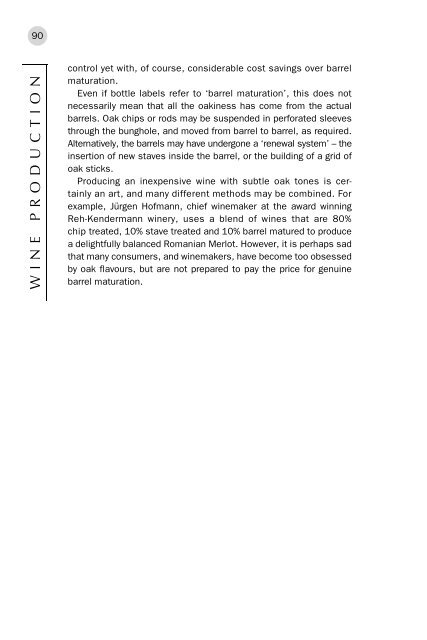Wine Production : Vine to Bottle - Vinum Vine
Wine Production : Vine to Bottle - Vinum Vine
Wine Production : Vine to Bottle - Vinum Vine
You also want an ePaper? Increase the reach of your titles
YUMPU automatically turns print PDFs into web optimized ePapers that Google loves.
90<br />
WINE PRODUCTION<br />
control yet with, of course, considerable cost savings over barrel<br />
maturation.<br />
Even if bottle labels refer <strong>to</strong> ‘barrel maturation’, this does not<br />
necessarily mean that all the oakiness has come from the actual<br />
barrels. Oak chips or rods may be suspended in perforated sleeves<br />
through the bunghole, and moved from barrel <strong>to</strong> barrel, as required.<br />
Alternatively, the barrels may have undergone a ‘renewal system’ – the<br />
insertion of new staves inside the barrel, or the building of a grid of<br />
oak sticks.<br />
Producing an inexpensive wine with subtle oak <strong>to</strong>nes is certainly<br />
an art, and many different methods may be combined. For<br />
example, Jürgen Hofmann, chief winemaker at the award winning<br />
Reh-Kendermann winery, uses a blend of wines that are 80%<br />
chip treated, 10% stave treated and 10% barrel matured <strong>to</strong> produce<br />
a delightfully balanced Romanian Merlot. However, it is perhaps sad<br />
that many consumers, and winemakers, have become <strong>to</strong>o obsessed<br />
by oak flavours, but are not prepared <strong>to</strong> pay the price for genuine<br />
barrel maturation.
















